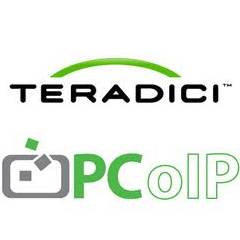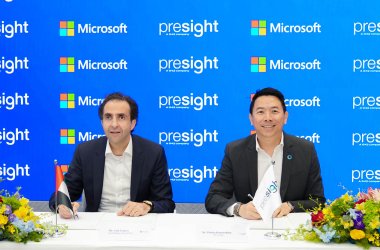Teradici is expanding the use of its PC-over-IP protocol, which is used to accelerate the performance of server-based desktops, to Microsoft Windows Server, the company said.
Today, the PC-over-IP (PCoIP) protocol is used to improve the performance of multimedia and other graphics-heavy applications on VMware’s Virtual Desktop Infrastructure (VDI).
But with the arrival of Teradici’s Remote Desktop Services Host (RDSH) Published Desktop enterprises will be able to combine VMware View and Microsoft RDS desktops and have the same performance levels across both types of desktops.
The product came about because Teradici started to think of ways to get more out of its two areas of expertise: the protocol and building chipsets, which are used to improve the performance of PCoIP.
“Where we landed was that the fundamental asset of the company and the core intellectual property is really the protocol,” said Trent Punnett, vice president of marketing, product management and systems engineering at Teradici.
The company’s strategy going forward is to make PCoIP neutral with regard to the back-end that generates the remote desktop. This is the first step, and more will come later this year, around mid-October.
“We are finalising the contract on that one, so I can’t really talk about it,” said Punnett.
The target customers are enterprises that want to run VMware View and Microsoft Terminal Services at the same time. Many enterprises are very interested in VDI for some of their desktops and particular use cases, according to Punnett.
“But VDI is expensive to deploy, and it is also difficult to deploy. Also, some applications aren’t applicable, and enterprises want them to remain in the RDS desktop pool,” said Punnett.
What Teradici has done is add a driver for PCoIP to the Windows Server, which basically takes RDS out of the picture. The performance difference you get when you do that is quite striking, according to Punnett. PCoIP really shines on more graphic-intensive applications, including video playback, he said.
Microsoft has been briefed a number of times and is fully aware of what Teradici is doing. The company is a little nervous because of its support for RemoteFX, which is also used to improve the performance of RDS, according to Punnett.
On the server side, RDSH is compatible with Windows Server 2008 R2 and Windows Server 2012. For the product to work, the clients have to be compatible with PCoIP.
When upgrading desktops Teradici recommends the use of hardware-based zero clients, because they are the easiest to deploy and users get the best performance, according to Punnett. Another option is to use VMware’s View clients, he said.
VMware’s View infrastructure is used to handle all sessions and the management of both environments.
The way to think of this is as a solution that is complementary to VMware View, and makes it more competitive with Citrix Systems.
“Citrix XenApp is a great solution. It is well-developed and has a lot of bells and whistles, but it is also pricey,” said Punnett.
The first version of Teradici RDSH will start shipping in December, followed by version 1.5 in June and version 2.0 in November next year. The latter will include application publishing, alongside desktops.
On Monday, Teradici will start an alpha program for a limited number of partners and customers. The code has been up and running for a month and is solid, Punnett said.
That will be followed by a beta program in October.
Between now and December, Teradici is planning to do a lot of testing, and hopefully also add a few features that are scheduled for inclusion in later versions, including USB support and local printing. Network printing will be included in version 1.0.
Rolling out a product that changes the way desktops are run isn’t done overnight. The first version will be used to test the concept, and version 1.5 will be installed in production environments, according to Punnett.
Pricing still hasn’t been decided.
The product will also be demonstrated by Teradici at VMworld 2012, which starts on Aug. 26 in San Francisco.






